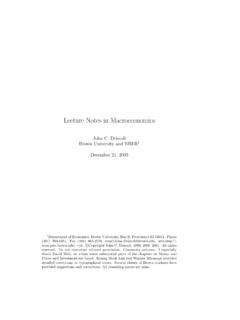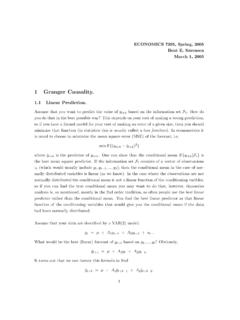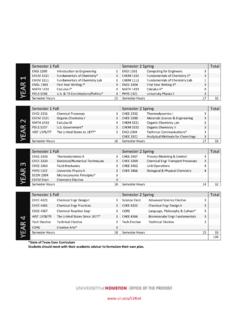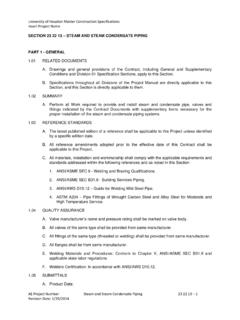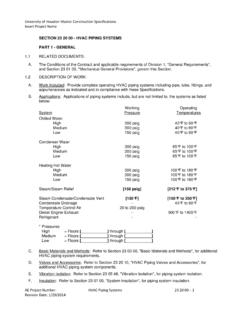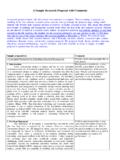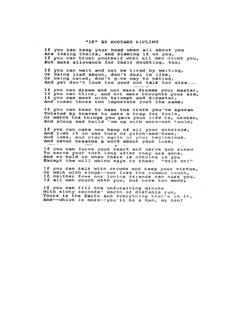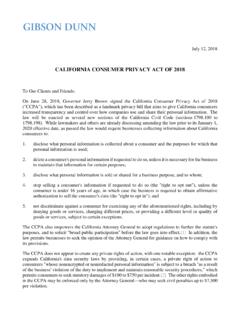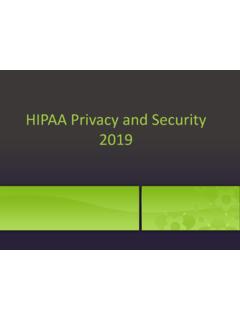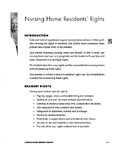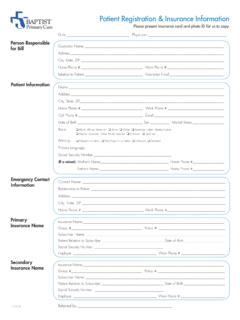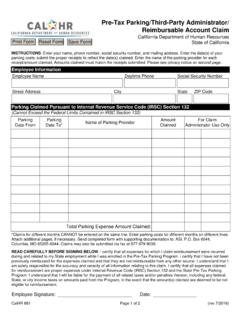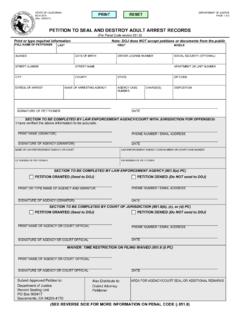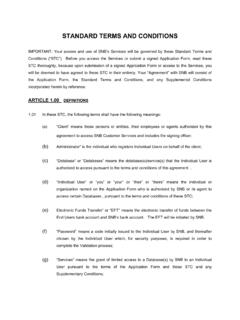Transcription of HIPAA AND MEDICAL PRIVACY : Guidelines for Faculty, Staff ...
1 HIPAA AND M EDICAL P RIVACY: Guidelines for Faculty, Staff and Students Relating to Pr otected Health Infor mation 1. Introduction: Pursuant to SAM , the duties of the General Counsel include, in part, issuing Guidelines with regard to the use of protected health information. This document provides Guidelines for the protection of the confidentiality of protected health information as required by the Health Insurance Portability and Accountability Act of 1996 ( HIPAA ), the Health Information Technology Act of 1996 ( HITECH Act ), the Texas MEDICAL Records PRIVACY Act, and related regulations. As provided by section of SAM , it is the responsibility of each component university of the University of Houston System (the System ) to adhere to these Guidelines .
2 Additionally, each employee/student of the System and its component institutions who have access to protected health information are required to adhere to these Guidelines . HIPAA and the HITECH ACT (collectively HIPAA ) are federal laws that protect the PRIVACY of a patient's protected health information. Patients have specific, protected rights regarding the release and handling of such records and HIPAA requires covered entities . (as defined below) to adhere strictly to these Guidelines . Therefore, it is imperative that faculty/ Staff /students with access to protected health information have knowledge of HIPAA Guidelines . 2. HIPAA Guidelines : Covered Entities: If you are a health care provider (physicians, hospitals, clinics, etc.)
3 And transmit health information in electronic form ( claims, benefit eligibility, referral authorization, enrollment, claim status, healthcare and premium payments, coordination of benefits), then you are a HIPAA Covered Entity. Protected Health Information: Protected health information (PHI) includes any information that can possibly identify the particular patient to which the information applies. This information can be written, verbal, or electronic, including the name, address, social security number, phone number, photograph, zip code, treatment date, employer, names of spouse and children, and any other information that can potentially identify the subject such as rare conditions, unique characteristics, etc.
4 Important Exceptions: Health information on students is NOT PHI when it constitutes either an education or a treatment record (student health information used only for treatment and not disclosed to anyone else) under the Family Education Rights and PRIVACY Act (FERPA). Please contact the University General Counsel with questions about the interplay between FERPA and HIPAA . Responsibilities of Health Care Providers: Each applicable clinic or department must: (i) identify a PRIVACY Officer; (ii) document its policies/procedures used to protect PHI, authorizations, restrictions, and complaints; (iii) keep documentation for 6 years;. Page 1 of 5.
5 And (v) train faculty, Staff , and students on HIPAA . The HIPAA training should be provided to each new Staff or faculty member and student clinician, as well as on an annual basis to such individuals and to each person who changes job functions. Notice of PRIVACY Practices: This document states how patients' health information may be used and disclosed and specifies patients' rights with respect to the information. This notice must be provided to each patient at the time of first contact with the patient, be posted at the clinic, and be available on its website. Patients must acknowledge receipt of the form. If the patient refuses to sign, note refusal on acknowledgement form and place in patient's file.
6 Consents for Treatment Use and Disclosure: Utilize separate consent forms for: video/audio taping and observation of the patient for training purposes. Causes of HIPAA Incidents: Careless handling of patient information, unauthorized access or disclosure of patient information, sharing passwords or enabling others to work under the same user ID, accessing electronic patient information without first logging on with your own unique identification or password, failing to log off, shut off, or otherwise protect computer, gossiping about a patient's health information, faxing documents containing patient information to the wrong recipient or fax number, mailing reports or billing statements containing patient information to the wrong patient or wrong address, giving patient information or documents to the wrong patient.
7 Leaving printed documents containing patient or other confidential information unattended in a public place, having cameras or data storage devices with unencrypted patient data or pictures lost or stolen, sharing sensitive patient information while visitors are present in the patient's room without giving the patient an opportunity to object or consent. Sharing Patient Information: You must obtain authorization before using or disclosing patient information EXCEPT to provide treatment or services for the patient, to bill or collect payment for services, as required in order to do your job as part of defined health care operations, as required or allowed by law ( , court order, subpoena, in response to any law enforcement body), or with appropriate authorization by the patient or the patient's legal representative.
8 Except for treatment purposes, only share the minimum necessary information. Any court order, subpoena, Texas Public Information Act request or other similar request for protected health information should be immediately brought to the attention of the PRIVACY Officer and UH General Counsel before taking action. Authorizations received from other entities: Make sure any authorization form you receive from other entities contain the language required under HIPAA or state law to cover YOUR release of the patient's PHI! Best to check with your PRIVACY Officer, department head, or UH General Counsel. Minimum Necessary Disclosure: Only use the minimum necessary disclosure of PHI.
9 Only employees authorized to use and disclose PHI are permitted to do so. The health provider must not use or disclose a patient's PHI without the written permission of Page 2 of 5. the patient, except as described in its Notice of PRIVACY Practices. Examples of Minimum Necessary: your best friend's brother comes into your clinic for care. If you are NOT. providing his care, you should NOT be reading his records. The receptionist/appointment maker/file clerk should NOT be reading the contents of a patient's file in most situations. If someone authorized to receive information requests the dates of treatments, provide the dates but no more information than requested.
10 De-Identifying PHI: Remove all 18 Personal Identifiers to avoid being subject to HIPAA : Names (patient, relatives, household members & employers), Address (street address, city, county, state, precinct and all geographic subdivisions smaller than a state), Zip Code, Dates (birth, visit, admission, discharge, death and all ages over 89), Visual (pictures, voice prints, finger prints), Numbers (accounts, SS, licenses, health plan numbers, serial numbers, etc.), Phone numbers, fax numbers, e-mail addresses, Web URLs, IP address numbers, Any other unique identifying number, characteristics, or code. Marketing & Fundraising: HIPAA and Texas state law each have specific requirements for marketing purposes.
